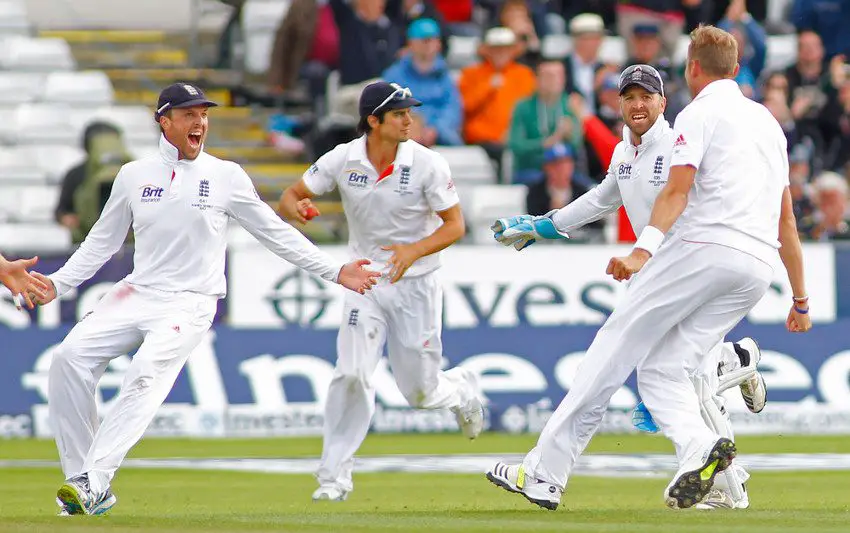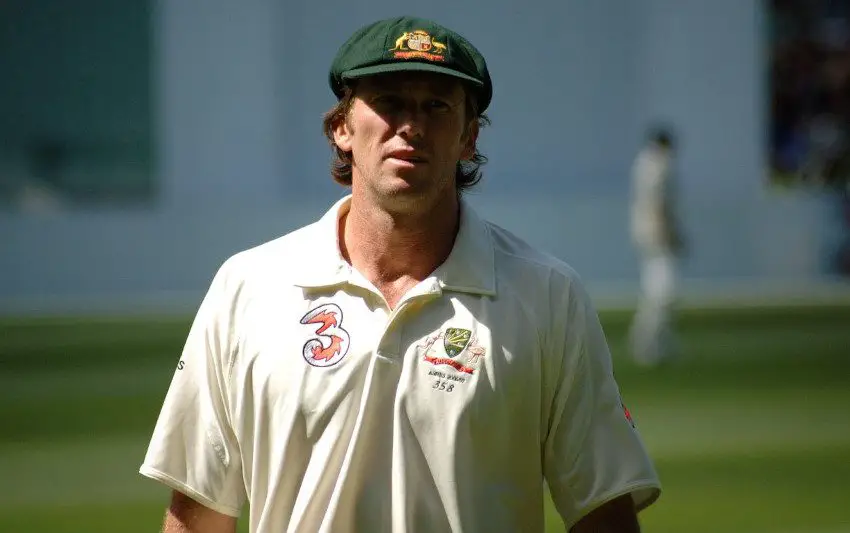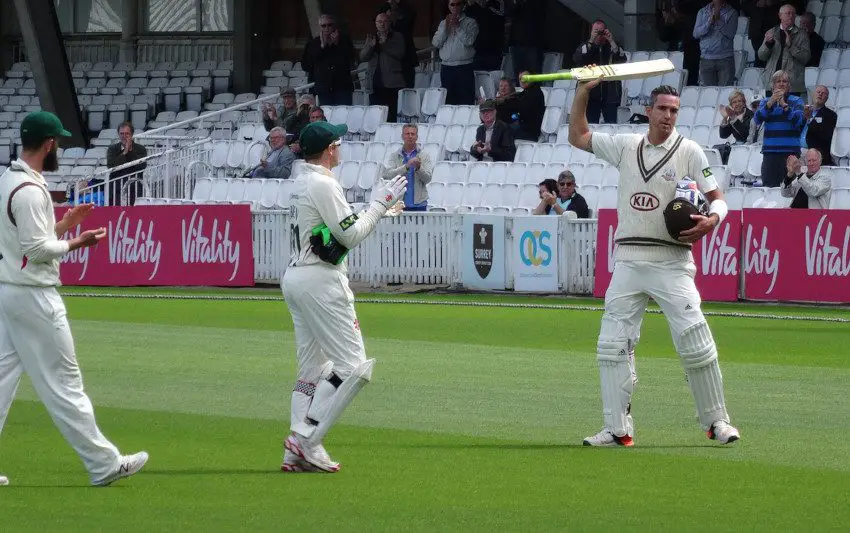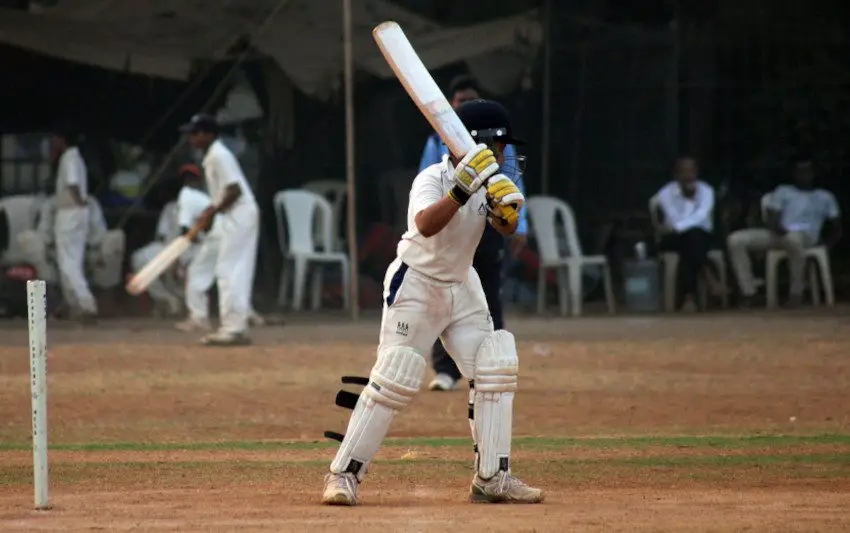Table of Contents
Part of the purpose of this website is to bust some cricketing jargon. This time, the term ‘spell’ is under the spotlight, but what does it mean?
What is a Spell in Cricket?
A spell is a term used to describe an unbroken set of overs bowled by a bowler. When they finish their set of overs and are replaced by a teammate or, if the innings has come to an end, the number of overs they have sent down is referred to as a spell.
The word ‘spell’ can be used in any of the three major forms of the game.
How Many Spells Can A Bowler Bowl?
In theory, there is no limit to the number of spells that a bowler can send down. In test matches and other forms of first class cricket, bowler restrictions are not in play.
Therefore, there is no upper limit on how many overs and how many spells a bowler can have during an innings.
In limited overs cricket, things work slightly differently. In 50-Over games, each bowler can deliver a maximum of 10 overs. In T20 cricket, the limit is reduced to four overs per bowler.
This means that a bowler can deliver up to ten spells in one day games and four spells in T20s.
How Many Overs Is A Spell?
In theory, one completed over could constitute a spell. It would be a very brief one, but you will hear commentators say that a specific bowler has delivered a one-over spell.
In practise, a spell is usually longer. It is used more often in first class cricket where a player sends down a significant number of overs at a time. There is no particular figure that can be termed as a ‘spell’, but I would say that at least six overs are necessary to fit the terminology.
It’s worth mentioning at this point that some commentators may refer to a spell as the complete number of overs that a bowler has delivered during a game. Strictly speaking, I would say that a spell has to refer to an unbroken set of overs.
What is The Longest Spell in Cricket History?
The longest spell in the history of cricket was delivered by Narendra Hirwani for India against England in 1990. The off spinner sent down an unbroken spell of bowling that lasted for an incredible 59 overs.
This was the game where England batted deep to save the match after being forced to follow on. The 59 overs were all that Hirwani bowled in England’s second innings and he finished with figures of 1/137.
Some of the Best Bowling Spells in Cricket History
Curtly Ambrose – Australia v West Indies – The WACA, Jan 30, 1993
This was one of the briefest of devastating bowling spells. With the series between Australia and West Indies tied at 1-1, it needed something special to swing the fifth and final game.
Enter Curtly Ambrose whose spell of 7/25 destroyed the Aussies and handed the series to the Windies. It’s incredible to note that those seven wickets came in just 32 deliveries.
Allan Border and David Boon were removed before Curtly saw off the tailenders to hand victory to the West Indies.
Stuart Broad (8-15), England v Australia, Ashes 2015
This astonishing spell of bowling was delivered by Stuart Broad at Trent Bridge in 2015 and it helped England to take a grip on that summer’s Ashes series.
Broad simply destroyed Australia’s top order as the swing and seam on the first morning gave the home side the advantage. He claimed the fastest ever five-wicket haul for an England bowler as the tourists were reduced to 29/6.
Things improved but not by much as Australia finished on 60 all out. Broad’s figures of 8/15 came from just 9.3 overs and all of his victims were caught behind the wicket.

Courtney Walsh – 1986, Sri Lanka vs West Indies
Courtney Walsh and Curtly Ambrose made a fearsome pairing with the new ball for the West Indies, and, on this occasion, it was Walsh’s turn to wreak havoc.
The game against Sri Lanka in 1986 was a One Day International and this was early on in Courtney’s career. He didn’t take the new ball and, in fact, he was the fifth bowler used that day.
At that point, the Sri Lankans were on 45/2 as they looked to chase down a target of 249. Walsh intervened and returned the incredible figures of 5/1 from 4.3 overs. Sri Lanka were all out for 55 and Courtney Walsh’s figures remain the cheapest of anyone who has claimed a five wicket haul in ODI cricket.
Shoaib Akhtar – 2002. Pakistan v New Zealand
The Rawalpindi Express will be remembered for his sheer pace but, When Shoaib Akhtar got the ball in the right areas, he was unplayable. In this game against the Kiwis, Shoaib produced what was arguably his best test performance as he returned figures of 6/11.
Lahore was the setting for the first test of the series in May 2002. If we’re being strict about the terminology here, we should say that Shoaib sent down two spells.
The first of these saw the paceman claim the first four wickets to fall. New Zealand were reduced to 21/4 and Shoaib had the stunning figures of 4/4. An ankle injury meant that he had to spend some time off the field but when he returned, the Rawalpindi Express went on to finish the job.
After treatment, Shoaib returned to take the final two New Zealand wickets in just eight balls.
Glenn McGrath – 2005. Australia v England
England would eventually win an Ashes series for the first time in 18 years, but the tests started with a defeat at Lord’s. England would have been pleased to have dismissed Australia for just 190 but hopes of an early win were blown away by their old nemesis Glenn McGrath.
England’s reply was quickly in trouble as McGrath claimed five wickets in just 31 deliveries. The home side recovered from 21/5 to 155 all out, but their fate in that first test had already been sealed.

What is the Best Bowling Spell in the History of ODI Cricket?
Many would argue that Courtney Walsh’s spell of 5/1 for West Indies against Sri Lanka takes some beating in this respect. They certainly have a point but the best figures in an ODI all came from within one spell.
Playing for Sri Lanka against Zimbabwe in 2001, Chaminda Vaas bowled eight consecutive overs as he claimed those record breaking figures of 8/19. Zimbabwe were bundled out for 28 and Sri Lanka coasted to victory by nine wickets.
We can debate about the quality of the opposition but in terms of those statistics alone, Vaas’ effort constitutes the best bowling spell in ODIs.
What’s the Best Bowling Spell in T20i Cricket?
If we’re using that figure of six overs to constitute a spell, you can’t really include T20 cricket in the equation. Bowlers are only allowed a maximum of four overs in the innings and, on many occasions, they will only deliver a single over before they are taken off.
There have certainly been some devastating bowling performances in this format. At the 2024 T20 World Cup in the West Indies and the USA, I watched an incredible display from New Zealand’s Lockie Ferguson.
Against Papua New Guinea, the paceman sent down his full four overs and didn’t concede a run. He claimed three victims to finish with the remarkable figures of 4-4-0-3.
Ferguson isn’t the only bowler not to concede a run for four overs in T20is. In 2021, Canada’s Saad Bin Zafar was the first to achieve this feat. Bowling versus Panama, he took two wickets for figures of 4-4-0-2.
However they divided up their overs, we can safely say that both Saad Bin Zafar and Lockie Ferguson produced devastating spells of T20 bowling.
In terms of the best figures in T20 internationals, these are changing all the time. Because the ICC has expanded the format, we’re seeing some low totals and very one-sided contests at times.
As I write this in October 2024, the best figures in international T20 cricket are the seven wickets for eight runs claimed by Syazruk Idris, while playing for Malaysia against China in 2023. That is an incredible return, but the fact that China were bowled out for just 23 gives you a clue about the standard of the match.
The best figures in a game between two full members of the ICC are the six wickets for seven runs taken by Deepak Chahar for India against Bangladesh at Nagpur in 2019.
Once again, no matter how those overs were divided, we can certainly claim that Chahar’s effort is up there as one of the best spells in T20 internationals.
Is there a Bowling Spell that has Completely Changed the Result of a Match?
Many of these spells have come at a time when the batting team was already under pressure but is there a case of a spell changing the course of a game?
There have been a few in this respect but, perhaps the most remarkable was delivered by Pakistan’s Sarfraz Nawaz against Australia on the 1978/79 tour.
In the first test at Melbourne, Australia were chasing 382 to win. It was a stiff target but, at 305/3, it seemed as though the hosts would make it home with some ease.
Sarfraz came back into the attack and finished off those hopes with the next seven wickets. His overall figures in the innings were 9/86 but those seven wickets had come at the cost of just one run.
Sarfraz was on a hat trick on two separate occasions and, while he didn’t convert, his brilliant spell turned the game as Australia were bundled out for 310, losing the match by 71 runs.
Our Favourite Bowling Spell
For me, the greatest bowling spell of all time came in the 1981 Ashes series. In the third test at Headingley, Ian Botham’s batting had captured all the headlines but it was Bob Willis who saw England home with a devastating spell of bowling.
Chasing just 131 to win, Australia had started reasonably well before Willis blew them away with figures of 8/43. That’s my favourite memory of a great bowling spell but what about you?
Conclusion
A spell is really just a regular term to describe a segment of bowling. It could just be an innocuous, one-over spell that goes for a few runs at the start of a T20 game.
As we have seen, a spell can also be devastating and it can change the context of a game. We all have our own favourites but the above list contains some of the best bowling spells in the history of cricket.


